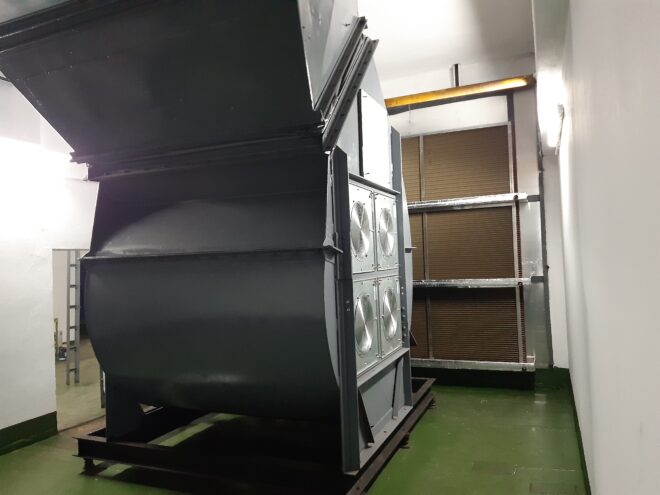The festive season was just around the corner and the temperatures in Vanderbijlpark, south of Johannesburg, made it seem like it was summer. It was bad news when the cold water system in Pick n Pay branch, one of the largest South African supermarket chains, reached the end of its service life at this time: sweaty Christmas shopping trips and major conversion measures were not an option for Pick n Pay.
However, the conditions in the operating room did not make it easy for Douglas Scott, Mechanical Engineer at refrigeration and air conditioning company HCM, to bring the system up to date with a variable refrigerant flow: Pick n Pay wanted new, energy-saving air conditioning and EC fan technology. A particular challenge was that, previously, a single large centrifugal fan sucked air in through the heat exchangers in the operating room, supplying the existing pipe system and consuming a large amount of energy in the process.
More power under the same ceiling
But replacing it was not so easy: the fan was located in the middle of the spacious room, which had a suspended ceiling. Scott explains, “A typical FanGrid was ruled out because any pressure built up in the room would simply escape through the ceiling. In addition, we would have had to extend the fan wall either up to the ceiling and change the ceiling design, or alternatively build a smaller fan room and modify the existing cable system.” There were no options, considering the time-consuming conversion measures that would disrupt business.

Turning one into nine: Where once a single large centrifugal fan sucked in air via the heat exchangers and supplied the existing duct system, now there is a fan cube with nine new power packs. (Photo | HCM)
But Scott had an idea: why not use the old centrifugal fan’s existing housing? After all, it was already connected to the pipe system. It was big enough to fit in and offered plenty of space on the flat side walls for the ebm-papst fans’ panels, which are easy to install. If a FanGrid would not work, what about a cube?!
The dice are rolled
Dewald Hattingh, Sales Engineer at ebm-papst South Africa, was on hand to implement the ambitious idea, “We considered many reasons why a fan cube would not work, but, in the end, HCM and ebm-papst established a theory that, as pressure sources, the fans would generate pressure that was turbulent yet so high that the fans would fulfill the system’s flow requirements,” says Hattingh.

In the housing of the old centrifugal fan, nine RadiPac EC fans now ensure the right temperature in the chilled water system. This makes shopping fun again. (Photo | HCM)
There was not much time for simulations, so it was important to find out quickly whether the theory would work in practice or the nine RadiPac EC fans in the cube would work against each other. But everything went well: the cube works perfectly.
Scott sums up: “The project would not have been possible without the impeccable service from ebm-papst South Africa. The expert personnel supplied HCM with software and hardware and provided invaluable advice on the possible problems that could occur when using fans in this unconventional way. They worked with HCM to test the solution in the field, provided local stock to ensure a quick turnaround, and provided support with commissioning the system.”

Leave a comment